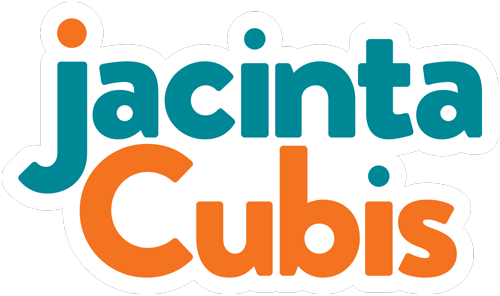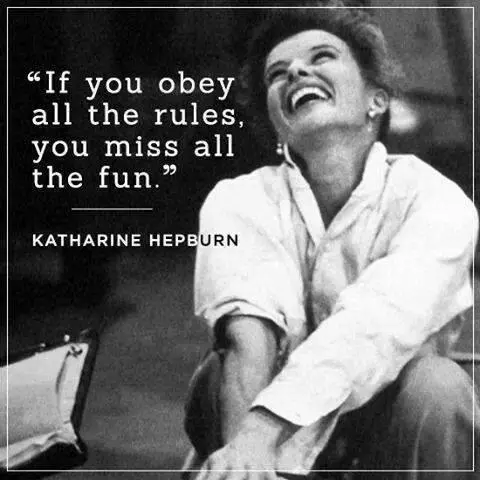Whose rules are they anyway?
‘Who makes these rules? People I don’t know and don’t understand.’
I love this rebut from my partner whenever I start berating myself with ‘I should do this’ and ‘I must do that’.
Says who? Good question.
I’ve been thinking about rules after a friend told me that she hates rules, as she embarked on a weekend of managing her daughter’s netball team. Not just one game. A full two-day tournament of piercing whistles as players broke the rules every few seconds. A nightmare for her.
If you’re a regular reader, don’t leave! I’m not going to talk about being a referee with groups*. I’m going to do just the opposite.
I did feel a bit like a naughty netballer when a facilitator asked me why I didn’t give a group any ‘ground rules’ or a ‘group agreement’😮.
He was fresh off a facilitation course and his tone was a little accusing. He didn’t have a whistle but his question stopped me in my tracks.
Who says a group has to have ground rules?
Who says every group needs ‘an agreement’?
What are they anyway? Are they the same for every group?
Who says it’s the facilitator’s job to tell them?
We were with an advisory group who were gathered to hear a project update. Their job was to listen and ask questions in their hour together. They took what they heard back to their respective groups to then gather their responses.
I judged it unnecessary to instruct this group of adults on how to listen and ask questions. They’d been meeting regularly for the past year and creating their own group culture. I was there mostly to keep the project speakers to time and to gently prod them if they responded to questions in bureaucratic jargon.
But this young facilitator had learned that every group needed an agreement or ground rules.
⚠ Permit me a rant.
As a participant, I’ve seen these dutifully elicited from the group and neatly written up by the facilitator. The usual suspects appear on the list: ‘respect, listen, no judgement, every idea’s a good idea’. The carefully written up agreement or set of rules is then stuck up on the wall and ignored.
But sometimes a group agreement is needed and it can work. Just do it differently. Here’s one way.
Who before how
Let’s assume you are clear on the purpose and that the group needs to collaborate to achieve that purpose. Before you think about how people might ‘behave’ picture who’s coming. Ask yourself and your co-designers questions like:
Who is coming? What’s likely to be on their mind? How might they be feeling? Do they know each other? Do they have a group culture? What’s that like? Do they have a set of written down behaviours to guide their work together? Do they ‘live’ these behaviours already? Does this need to be explored with the group?
These and other questions will help you determine if the group needs their own agreement or ground rules. And that bring me to:
Make it fun
The group are standing or sitting in a circle. I read out a few examples of behaviour and communication styles, like: ‘I hate it when people finish my sentences’; ‘I’m an above average listener’ or ‘we hear from the same people all the time’ (there’s a long list to choose from!) and ask people to swap seats if that behaviour annoys them, is something they do, or that others do. It’s fun and fast. I take a chair away and whoever’s left standing in the next round then shares their own example. I can extend this activity if I sense it’s needed (ask me how if you like - I won’t go into the detail here).
Make it personal
Once they are sitting down again, ask people to recall a group they’ve worked in – at home, in their neighbourhood, their community or at work. Once they’ve got a group in their mind, I ask them to jot down their response to two questions:
❓ What worked well in that group?
❓ What got in the way?
And give them a minute or so to think.
Movement and music
These two questions are written on the top of two blank pieces of butcher’s paper, or two columns on a white board, with one marker alongside each.
The group forms two lines in front of each column. One by one, they write up a response as quickly as they can, and hand the marker onto the person behind them. They can rejoin the line and move in between them as often as they like. I give this about 5 mins. I play fun, fast music that keeps people moving. They are moving so fast that they rarely have time to see what each other is writing. One song is usually enough time.
Messy over neat
The group ends up with a messy set of behaviours that they’ve created themselves. There’s duplication and overlap, and sometimes the same words appear in both columns. Each word, or picture, on that messy piece of butcher’s paper or white board resonates with at least one person’s previous experience of working in groups. Behind every behaviour listed is a story where that behaviour served, or hindered, a group. Then you can imagine what’s next:
What do they see? Can they group any behaviours? Which ones are the most important for their work together today? How will they keep themselves accountable?
If you’d like to know more, watch my quick video
Rules. At one end there are nonsensical ones like, ‘blue with green should never been seen’. At the other are the laws that protect life and property.
Protecting people in a group is just as important. The leader of every single meeting and workshop is responsible for creating and holding a safe space where people can contribute and have robust discussions. And in my experience, that safety will be stronger if the group decides how it wants to work together. As the meeting leader, it’s your job to create a process that supports them to do this together. And if it’s fun, even better, as that trailblazer, Katherine Hepburn said, ‘If you obey all the rules, you miss all the fun.’
The process I’ve shared here is fun and effective. I’d love to hear if you use it, adapt it and how that goes.
Let me know: jacinta@jacintacubis.com
And here’s a final question to ponder. How often have you found yourself doing something just because someone somewhere said it had to be done that way?
*If you’re a new-ish reader and want to read about how a facilitator might need to be a referee from time to time, here’s the blog
(Fl)awesome Facilitator Mentoring Program
Are you an expert or consultant who worries that you're overwhelming people with too much content? Feel like you’re facilitating by rote? Think you’re a failure if you don’t get ⭐⭐⭐⭐⭐ from everyone? My (Fl)awesome Facilitator Mentoring Deliver supports you to deliver incredible value with authentic flair and be invited back.



